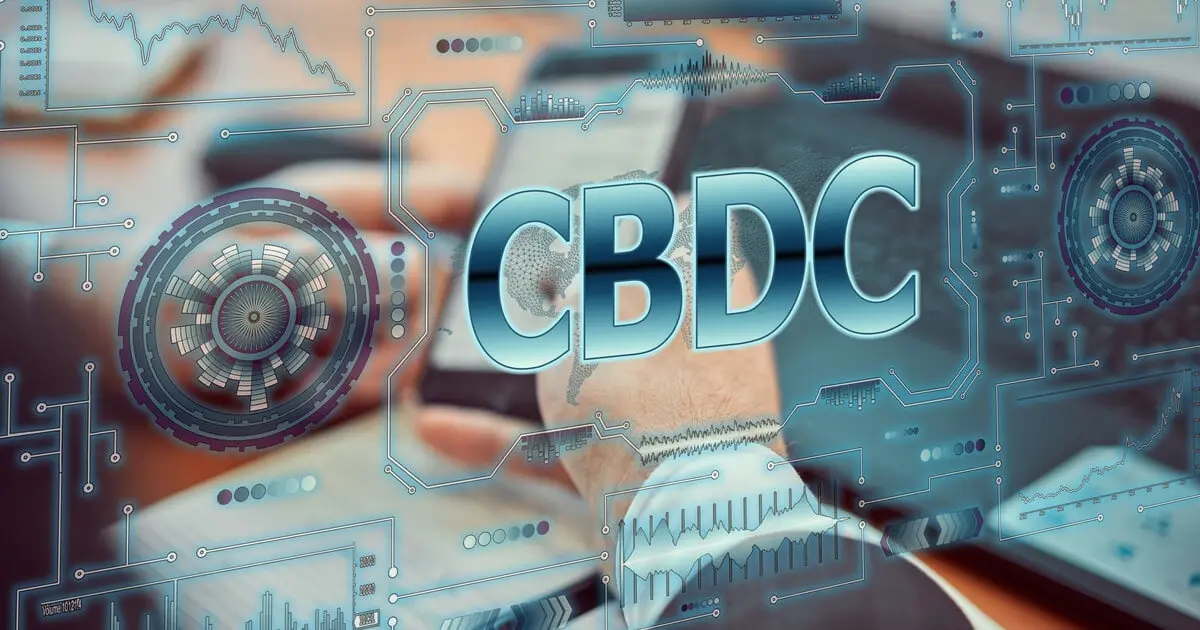Table of Contents
In the rapidly evolving artificial intelligence (AI) landscape, single-input systems are dominating the field.
However, healthcare professionals rely on a diverse spectrum of input – from patient records to direct observations – to make crucial decisions.
Multimodal AI could be the paradigm shift that closes the healthcare gap, with enormous potential to improve decision-making processes by having access to data from multiple dimensions.
AI in healthcare
Artificial intelligence has become an integral part of healthcare, with the ability to transform various aspects of medical practice and research.
AI algorithms can analyze complex medical data, such as imaging scans and genetic information, with remarkable speed and accuracy, helping to diagnose diseases and plan treatments.
Additionally, AI-powered predictive models improve patient care by predicting disease trends and patient outcomes.
In addition, administrative tasks are streamlined through automation, allowing healthcare professionals to spend more time on patient interactions, with AI potentially solving the global shortage of radiologists.
AI is being used effectively in various medical modalities, quickly detecting irregularities in radiological scans, deciphering complex biomedical signals for early detection of diseases. Customized treatment is made possible by analyzing genetic data. Furthermore, AI improves clinical decision-making and predictive outcomes, for example by integrating generative AI into electronic health records.
Although AI is primarily used to analyze individual data modalities, this unimodal AI approach has several limitations in healthcare:
– Incomplete view: Unimodal AI systems are unable to consider a holistic view of a patient’s condition. For example, an AI system that focuses only on medical images may miss important information in clinical notes or genetic data.
– Performance limitations: Relying solely on a single data source can result in limited diagnostic accuracy, especially in complex cases that require a multi-dimensional approach.
– Data silos and lack of integration: Unimodal AI systems can be developed independently for each data source, leading to data silos and difficulties in integrating insights from different sources.
– Limited adaptability: Unimodal AI systems are often designed to perform specific tasks on specific data types. Adapting them to new tasks or data types can be challenging.
What is Multimodal AI?
Multimodal AI refers to AI systems designed to process and understand information from multiple data sources or data types simultaneously.
These data sources, also called modalities, can include different forms of input, such as text, images, audio, video, sensor data, and more. Multimodal AI aims to enable machines to leverage the combined insights and context of these different data modalities to make more accurate and holistic predictions or decisions.
Unlike traditional AI systems, which often focus on one type of data input, multimodal AI leverages the power of different modalities to gain a complete understanding of a situation or problem. This approach reflects how humans naturally process information by taking various sensory inputs and contextual cues into account when making decisions.
Multimodal AI in healthcare
Healthcare is fundamentally multimodal due to the diverse and interconnected nature of information and data in the medical field.
When providing healthcare, medical professionals routinely decipher information from a wide range of sources, including medical images, clinical notes, laboratory tests, electronic health records, genomics, and more.
They synthesize information from multiple modalities to gain a complete understanding of a patient’s condition, allowing them to make accurate diagnoses and effective treatments.
The different modalities that healthcare professionals typically consider include:
- Medical images: These range from X-rays, MRI scans, CT scans, ultrasounds and more. Each type of image provides unique insights into different aspects of a patient’s anatomy and condition.
- Clinical Notes: These are the written records of a patient’s medical history, symptoms, and progress. These notes are often made over time by different healthcare providers and must be integrated to provide a holistic picture.
- Laboratory tests: These include various tests such as blood tests, urine tests and genetic tests. Each test provides specific data points that help diagnose and monitor health conditions.
- Electronic Health Records (EHRs): These digital records contain a patient’s medical history, diagnoses, medications, treatment plans, and more. EHRs centralize patient information for easy access, but require careful interpretation to gain relevant insights.
- Genomic data: With advances in genetics, healthcare now involves analyzing a patient’s genetic structure to understand their susceptibility to certain diseases and tailor treatment plans accordingly.
- Patient monitoring equipment: Devices such as heart rate monitors, blood pressure monitors, and wearable fitness trackers provide real-time data about a patient’s health, contributing to the overall diagnostic process.
- Medical Literature: The ever-changing landscape of medical research and literature provides additional information for healthcare professionals to consider when making decisions.
How Multimodal AI Overcomes the Challenges of Traditional AI
Multimodal AI in healthcare can overcome the challenges of unimodal AI in the following ways:
- Holistic perspective: Multimodal AI combines information from different sources to provide a holistic view of a patient’s health. Integrating data from medical images, clinical notes, lab results, genomics and more can provide a more accurate and complete picture of the patient’s condition.
- Improved predictions: By using data from multiple sources, multimodal AI can improve diagnostic accuracy. It can identify patterns and correlations that may be missed by analyzing each modality separately, leading to more accurate and timely diagnoses.
- Integrated insights: Multimodal AI promotes data integration by combining insights from different modalities. This facilitates healthcare professionals’ access to a single view of patient information, promoting collaboration and informed decision-making.
- Adaptability and flexibility: Multimodal AI’s ability to learn from different types of data enables the AI to adapt to new challenges, data sources and medical developments. It can be trained in different contexts and evolve with changing healthcare paradigms.
Possibilities of multimodal AI in healthcare
In addition to overcoming the challenges of traditional unimodal AI, multimodal AI offers numerous additional opportunities for healthcare. A few are mentioned below.
- Personalized precision healthcare: By integrating diverse data, including “omics” data such as genomics, proteomics and metabolomics, along with electronic health records (EHR) and imaging, we can enable customized approaches to effectively prevent, diagnose and treat health problems.
- Digital Trials: The fusion of wearable sensor data with clinical information can transform medical research by improving engagement and predictive insights, as illustrated during the COVID-19 pandemic.
- Remote Patient Monitoring: Advances in biosensors, continuous tracking and analytics enable hospital-based home settings, reducing costs, reducing the need for healthcare staff and providing better emotional support.
- Pandemic surveillance and outbreak detection: COVID-19 has demonstrated the need for robust infectious disease surveillance. Countries have used a variety of data such as migration patterns, mobile usage and healthcare delivery data to predict outbreaks and track cases.
- Digital twins: The digital twin has its origins in technology and has the potential to replace traditional clinical trials by predicting the effect of a therapy on patients. These models, which are rooted in complex systems, make it possible to quickly test strategies. Digital twins are advancing drug discovery in healthcare, especially in oncology and heart health. Collaborations such as the Swedish Digital Twins Consortium emphasize cross-sector partnerships. AI models that learn from varied data provide real-time predictions in healthcare.
Challenges of multimodal AI in healthcare
Despite the many benefits and opportunities, implementing multimodal AI in healthcare is not without challenges. Some of the key challenges are
- Data Availability: Multimodal AI models require extensive and varied data sets for their training and validation. The limited accessibility of such datasets poses a significant obstacle to multimodal AI in healthcare.
- Data Integration and Quality: Integrating data from different sources while maintaining high data quality can be complex. Inaccuracies or inconsistencies in data from different modalities can hinder the performance of AI models.
- Data privacy and security: Combining data from multiple sources raises concerns about patient privacy and data security. Compliance with regulations such as HIPAA while sharing and analyzing data is crucial.
- Complexity and interpretability of models: Multimodal AI models can be complex, making it challenging to interpret their decision-making processes. Transparent and explainable models are essential to gain the trust of healthcare professionals.
- Domain expertise: Developing effective Multimodal AI systems requires a thorough knowledge of AI techniques and knowledge of the medical domain. Collaboration between AI experts and healthcare professionals is essential.
- Ethical Considerations: The ethical implications of AI in healthcare, including fairness, accountability, and bias, become more complex when working with multiple data sources.
Conclusion
Integrating different sources of information is crucial when making healthcare decisions, but current AI systems often focus on single data types.
Multimodal AI, which integrates different data modalities such as images, text and numbers, has the potential to revolutionize healthcare. It improves diagnostic accuracy, promotes collaboration and adapts to new challenges.
Multimodal AI offers opportunities such as personalized precision healthcare, digital trials and pandemic surveillance, but also faces challenges such as data availability, integration, privacy concerns, model complexity and the need for domain expertise.
Multimodal AI integration can improve patient care, research and predictive capabilities and reshape the healthcare landscape.
How large language models are changing every facet of business intelligence
- Why Online Advertisers Should Request Website Traffic Data from Google Analytics Instead of Using SEO Tools Like MOZ or Ahrefs? - March 24, 2025
- North Carolina’s Bold Move: State Bill Proposes Investing 10% of Public Funds in Bitcoin - March 22, 2025
- Justin Sun Stakes $100 Million in Ethereum on Lido – What Does It Mean for the Market? - March 19, 2025










![Top 10 Leading Countries in AI Research and Technology [current_date format=Y] 13 Top 10 Leading Countries in AI Research and Technology [current_date format=Y]](https://cryptheory.org/wp-content/uploads/2023/08/ai-strategie.jpg.webp)














